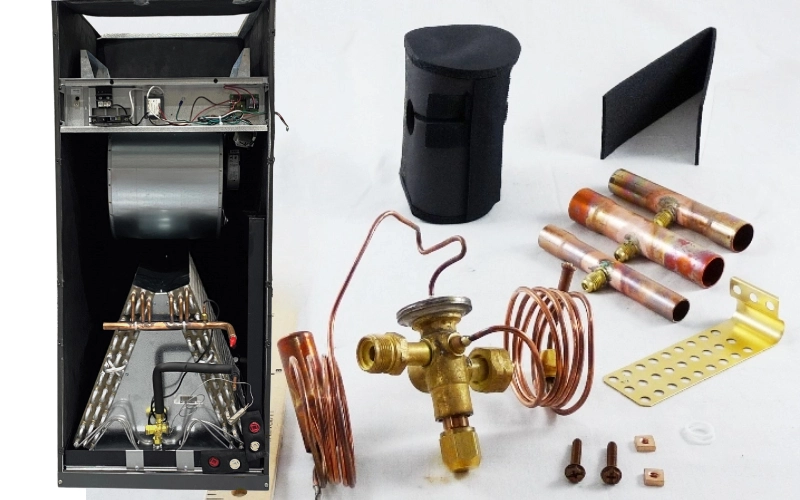Push buttons are ubiquitous in our daily lives, from turning on a light to ringing a doorbell. While they may seem simple, not all push buttons are created equal. In the world of electronics and control systems, understanding the fundamental difference between momentary and maintained push buttons is crucial for proper circuit design and operation.
This blog post will delve into the distinct characteristics of momentary and maintained push buttons. We’ll explore how each type functions, its typical applications, and the advantages and disadvantages associated with their use. By the end, you’ll have a clear understanding of which switch is right for your specific needs.
What is a Momentary Push Button?
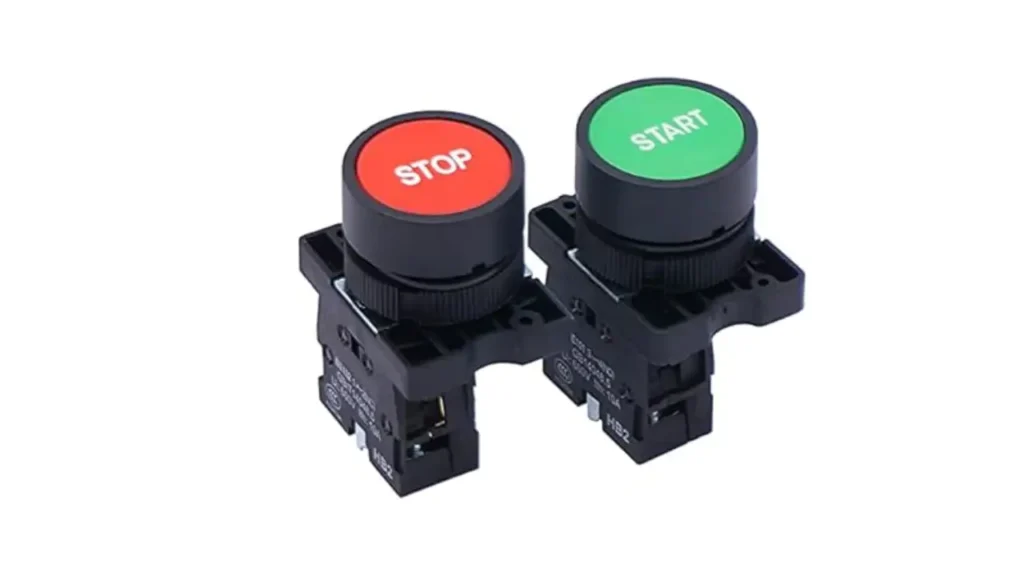
A momentary push button is a type of switch that only activates or changes the state of an electrical circuit while it is being physically pressed. Once the pressure on the button is released, an internal spring mechanism causes the contacts to return to their original, default state (either open or closed).
This makes them ideal for applications requiring brief, temporary actions, such as doorbells, computer keyboard keys, or the horn on a car, where continuous activation is not desired or necessary.
Momentary Push Button Uses
Momentary push buttons are utilized in countless applications where a temporary electrical contact is needed. Their defining characteristic of returning to their original state upon release makes them ideal for brief actions or signaling. Common uses include:
- Doorbells: Pressing the button briefly completes the circuit, activating the chime.
- Computer Keyboard Keys: Each key press sends a momentary signal to the computer.
- Car Horns: The horn sounds only while the button is held down.
- Reset Buttons: Often found on electronic devices, briefly pressing resets the system.
- Game Controllers: Many action buttons provide momentary input for quick commands.
- Elevator Buttons: A momentary press registers the floor selection.
What is a Maintained Push Button?
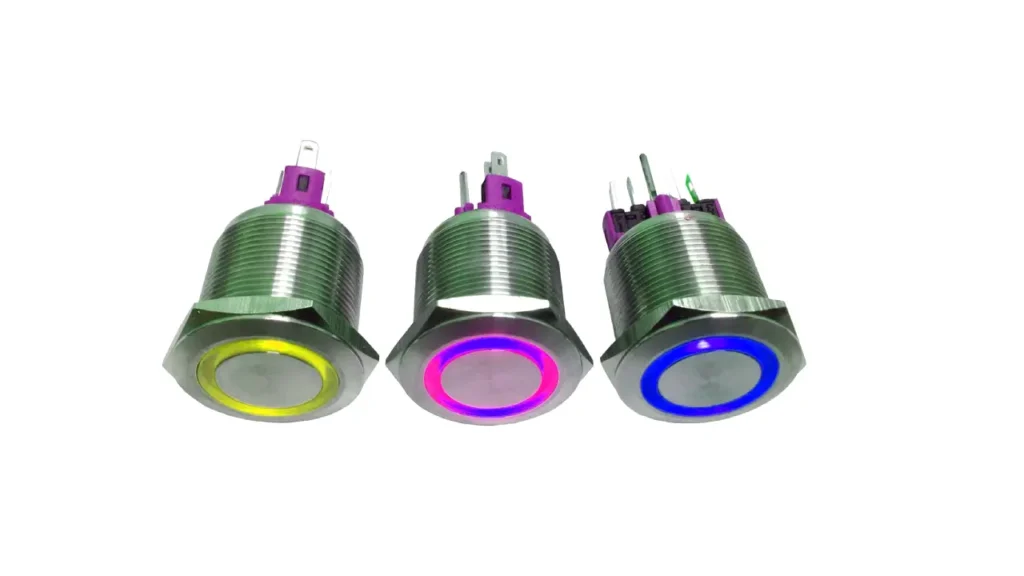
A maintained push button, also known as a latching push button, is a type of switch that, once pressed, changes its electrical state and then remains in that new state until it is pressed again.
Unlike momentary switches, which return to their original position upon release, a maintained switch “latches” into position, similar to a standard light switch. This makes them suitable for applications where you want a continuous “on” or “off” state without having to constantly hold the button down, such as power buttons for machinery, lighting controls, or alarm systems.
Maintained Push Button Uses
Maintained push buttons are essential for applications requiring a sustained ON or OFF state without continuous user input. Their latching mechanism makes them ideal for systems where a single press needs to initiate a persistent change. Common maintained push button uses include:
- Power Control: Turning machinery, lights, or other electronic devices ON or OFF, such as the power button on a computer monitor or industrial equipment.
- Lighting Systems: Controlling room lighting or outdoor lights, where a press toggles the light state.
- Safety and Alarm Systems: Activating or deactivating alarm systems, or as emergency stop buttons in industrial settings where a clear, sustained “off” state is critical.
- Access Control: For applications like maintaining a door unlocked for an extended period in an access control system.
- Industrial Control Panels: Widely used for various functions in factory automation and control systems where a consistent signal is needed.
Momentary vs Maintained Push Button
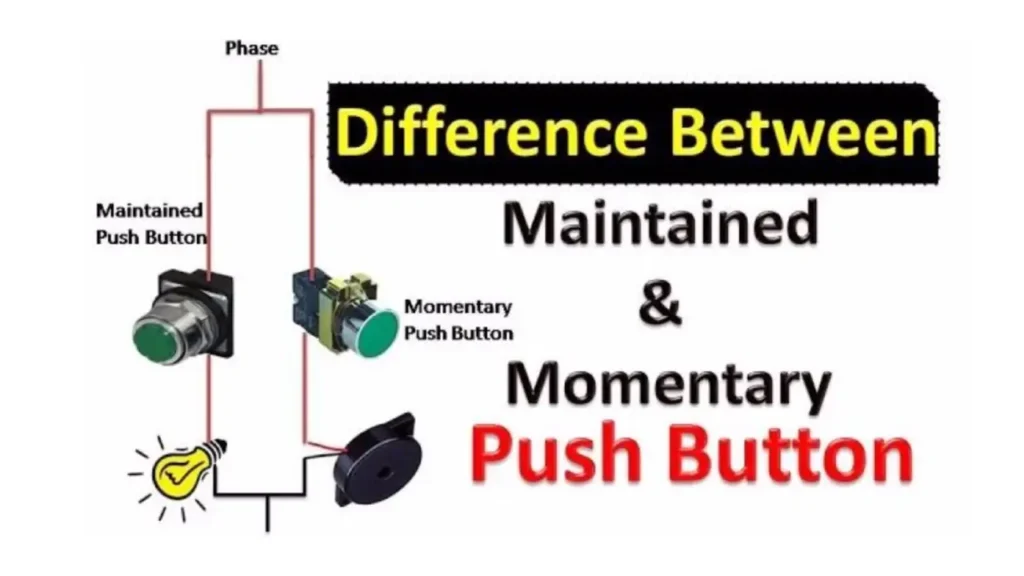
Understanding the differences between momentary and maintained push buttons is crucial for designing effective electrical circuits and user interfaces. Each type serves distinct purposes based on its operational behavior.
Operational Mechanism
Momentary push buttons activate an electrical circuit only while the button is physically pressed. Upon release, an internal spring mechanism returns the contacts to their original state, breaking or making the circuit. This makes them ideal for temporary actions.
In contrast, maintained push buttons, also known as latching switches, change their electrical state with one press and remain in that new state until pressed again. They effectively “lock” into position, providing continuous activation or deactivation without requiring constant pressure.
Functionality
Momentary push buttons are designed for actions that require a brief, transient signal. Think of a doorbell: you press it to ring, and it stops ringing when you let go. Their function is to initiate an event for only as long as the button is actuated.
Maintained push buttons are used when a consistent, continuous state is desired. A typical light switch is a perfect example; you flip it on, and the light stays on until you manually flip it off. They maintain their output until intentionally toggled again.
Applications
Typical applications for momentary push buttons include doorbells, computer keyboard keys, car horns, and reset buttons on electronic devices. They are prevalent in scenarios where a short burst of action is needed.
Maintained push buttons are commonly found in applications like power on/off switches for electronics, lighting controls, fan switches, and emergency stop buttons on industrial machinery. They are chosen for sustained control.
User Interaction
The user interaction with a momentary push button is inherently temporary. The user understands that the action will cease once pressure is removed. This provides immediate feedback and control over the duration of the action.
With a maintained push button, the user interaction establishes a persistent state. The button’s physical position often visually indicates the current state (e.g., pushed in for “on”), providing clear feedback that the action is ongoing until another press.
Wiring Complexity
Momentary push buttons often have simpler wiring requirements for basic on/off operations, as they are typically used to send a pulse signal. Their functionality is often managed directly by the circuit they control.
Maintained push buttons can sometimes involve slightly more complex internal mechanisms to achieve their latching function, though their external wiring is usually straightforward for simple on/off control. For more advanced latching, they might integrate with control relays.
Comparison Table
| Feature | Momentary Push Button | Maintained Push Button |
| Operational Mechanism | Activates only while pressed; returns to default state. | Activates with one press; remains in new state until pressed again. |
| Functionality | Brief, transient signal; temporary action. | Continuous, persistent state; sustained control. |
| Applications | Doorbells, keyboard keys, car horns, reset buttons. | Power on/off switches, light switches, emergency stops. |
| User Interaction | Temporary action; immediate feedback ceases on release. | Persistent state; often visual indication of current state. |
| Wiring Complexity | Generally simpler for basic pulse signals. | Can involve internal latching; straightforward for on/off. |
What is the Difference Between Active High and Low Push Buttons?
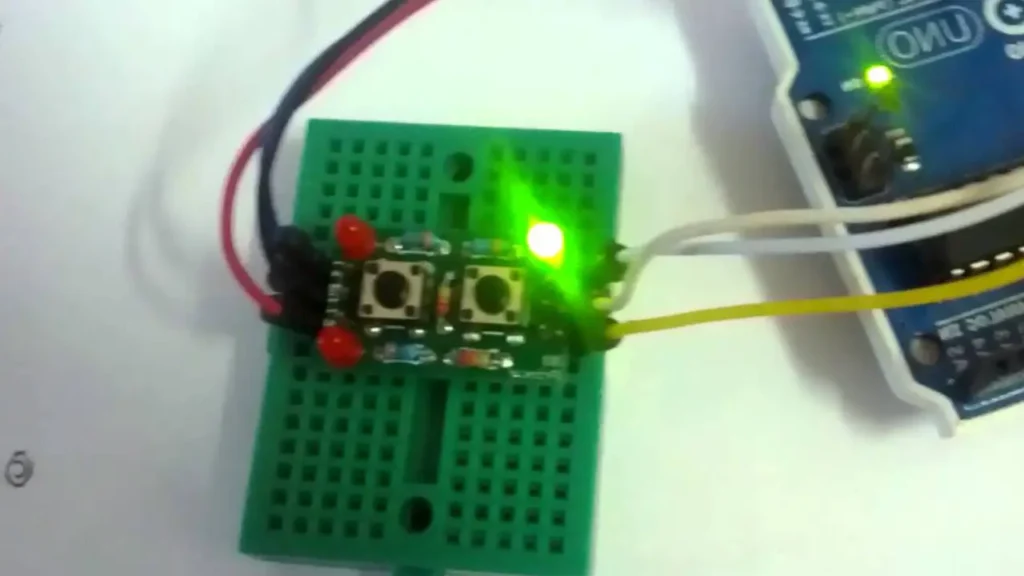
The difference between active-high and active-low push buttons lies in the specific voltage level (or logic state) that triggers an action or is considered “active” when the button is pressed. This distinction is fundamental in digital electronics for correctly interpreting button inputs.
- Active-High Push Button: An active-high push button outputs a “high” voltage (typically the supply voltage, representing a logic 1) when it is pressed, and a “low” voltage (ground, representing a logic 0) when it is not pressed. The circuit or microcontroller connected to it is designed to recognize the “high” signal as the active state, meaning the button is being actuated. This is often the more intuitive setup for beginners, as “on” correlates with a higher voltage.
- Active-Low Push Button: Conversely, an active-low push button outputs a “low” voltage (ground, logic 0) when pressed, and a “high” voltage (supply voltage, logic 1) when released. In this configuration, the active state is the “low” signal. Active-low designs are very common in electronics due to certain advantages, such as easier implementation with pull-up resistors and better noise immunity in some cases, especially in older logic families.
How to Choose Momentary and Maintained Push Buttons?
When selecting between momentary and maintained push buttons, consider the desired user experience and the functional requirements of your application. Think about how long an action needs to persist: if it’s a brief, temporary command like initiating a process or sounding an alert, a momentary switch is ideal.
Conversely, if you need a state to remain active or inactive until explicitly changed, like powering a device or toggling a light, a maintained switch is the appropriate choice. Evaluate the specific task the button will perform and how it integrates with the overall system’s logic to make the best decision.
Here are key aspects to consider for your choice:
- Duration of Action: If the action needs to be active only while the button is pressed, such as a doorbell or a horn, then a momentary push button is required. This ensures the action stops immediately upon release, preventing unintended continuous operation and providing precise, on-demand control over a transient event within your system.
- Desired State Persistence: For applications where a state must remain constant after a single press until another press changes it (e.g., turning a light on and keeping it on), a maintained push button is necessary. This latching behavior simplifies control by eliminating the need for constant user interaction to sustain an operational state, saving power and effort.
- Safety and Control Logic: In critical applications like emergency stops or power controls for machinery, a maintained push button offers clear, unambiguous “on” or “off” states that remain until manually reset, enhancing safety. For momentary actions like “panic” buttons or “reset,” where a brief input is sufficient, the momentary type prevents accidental prolonged activation, allowing for finer control over system responses.
- User Interface and Feedback: Consider how the user will interact with the button and what feedback is needed. A momentary button often provides tactile feedback of its activation only during the press. A maintained button, however, often provides a visual cue (e.g., staying depressed or having an indicator light) that clearly communicates its current state, which is crucial for systems requiring clear status indication for operators.
- Wiring and Circuit Design: While both types are generally straightforward, momentary switches often require simpler control logic for their transient output. Maintained switches might integrate more directly into power circuits for direct on/off control of devices. Understanding the circuit’s needs – whether a momentary pulse or a continuous signal – dictates which type simplifies your overall design and reduces complexity in the control system.
Conclusion
Choosing between momentary and maintained push buttons hinges on your application’s specific needs. Momentary switches offer transient control ideal for quick actions, while maintained switches provide continuous operation. Understanding these distinctions is crucial for effective circuit design and user interaction.
Ultimately, the right push button enhances both functionality and user experience. By carefully considering the operational characteristics and your project’s requirements, you can select the perfect switch type to ensure reliable and intuitive control.
For a wide selection of high-quality momentary and maintained push buttons, be sure to explore the offerings at Linkwell Electrics.

